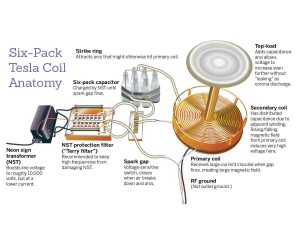Goal and Material
The goal of this experiment is understanding the relationship between light intensity and the voltage output of the solar cell.
For the material, we have
- One solar cell
- One voltage probe
- One NXT adaptor
- NXT with light sensor
- One light source
- Labview VI vi
- Ruler
- Colored film filters
- Excel sheet
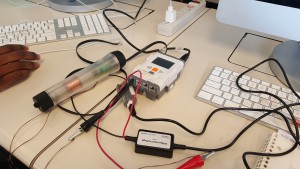
Experiment process
- We connect everything to the robot then we plug the USB cable between the robot and computer.
- Then, we open the Labview program
- This experiment is different from the other one because we did not need to type or calculate any thing before we pressed START.
- While one of my teammate pressed START on the program, the other would hold a button on light source with a colored film filters inside.
- After that, this teammate would shake it until the data on the program count to 30. While shaking, we had to count the amount of shake.
- Every time we did it, we had to open then close the excel sheet. We had 5 times for this experiment.
- For each time, we had to type the amount of shake and calculated the sum of voltage (30 numbers for each time).
- Also, we had to calculate the voltage in square and we only took the voltage which is square from each time for the final result. For example, we have 30 numbers on the last time. We tried to calculate the square each of them. Finally, we plus all of those square number together to get the sum of (voltage)^2
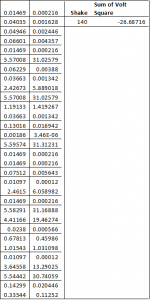
- Finally, we came up with this table and graph.
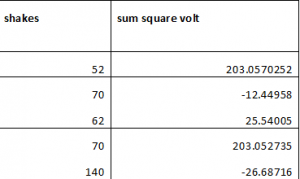
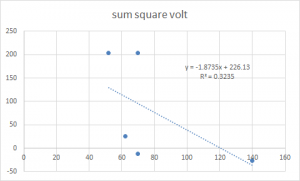
- However, it is not similar to what our professor expect for the final result.
Conclusion
The result seems a little bit weird because there is negative and not as same as what professor expect for the final result. I think that it is because I was stop a few second while doing the shake, then the result is not correct at all. For the next time doing this kind of energy experiment, I think that we have to eat breakfast before coming to class to have full energy.
